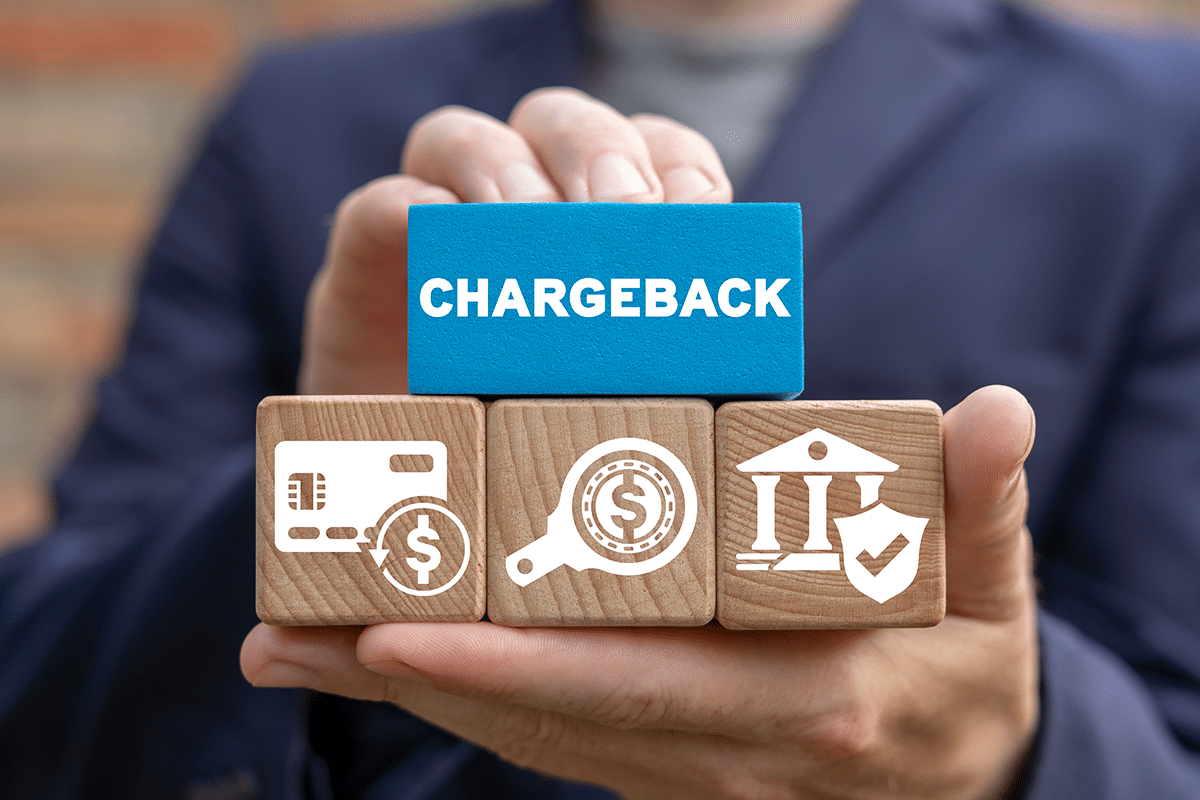As a small business owner, few things can be as frustrating and costly as chargebacks. According to Mastercard’s 2025 global report on chargeback trends, this problem is only growing, with global chargeback volume predicted to reach 324 million transactions by 2028, up from 261 million in 2025.
Chargebacks aren’t just an annoyance for small businesses operating on thin margins – they represent a significant financial threat. But with some strategic planning and the right systems in place, you can substantially reduce your risk.
Contents
- Understanding the Chargeback Problem
- 6 Actionable Steps to Protect Your Business from Chargebacks
- 1. Use Clear Merchant Descriptors
- 2. IntelliPay’s Fraud Prevention Tools
- 3. Document Everything
- 4. Provide Exceptional Customer Service
- 5. Create Clear Policies and Make Them Visible
- 6. Use Real-Time Alerts and Notifications
- Why Representment Matters
- Final Thoughts
- Further Reading
Understanding the Chargeback Problem
Before diving into solutions, let’s understand what we’re up against:
- The average chargeback amount for U.S. merchants averaged $110
- About 45% of merchant chargebacks are fraudulent, combining first-party and third-party fraud
- Digital transformation is driving more chargebacks, with 63% of merchants’ transactions now being digital purchases
6 Actionable Steps to Protect Your Business from Chargebacks
1. Use Clear Merchant Descriptors
The problem: Customers often don’t recognize transactions on their statements, leading to disputes based on “transaction confusion.”
The solution: Ensure your billing descriptor (the name that appears on customer credit card statements) identifies your business. If possible, include your phone number. According to the report, providing more insight into purchase details, such as a clear merchant name, can significantly reduce transaction confusion and disputes.
2. IntelliPay’s Fraud Prevention Tools
The problem: Third-party fraud accounts for 24% of merchant chargebacks globally.
The solution: Partner with a payment processor like IntelliPay that offers comprehensive fraud prevention tools.
- IntelliPay’s Advanced Fraud Protection includes sophisticated verification measures that help identify suspicious transactions before they’re processed.
- Their AVS (Address Verification Service) and CVV validation help confirm customer identity.
- IP address monitoring flags transactions from high-risk regions.
- Their real-time fraud scoring analyzes multiple data points to assess transaction risk.
- Intellipay’s platform also features velocity controls to limit the number of transactions from a single source in a given timeframe.
3. Document Everything
The problem: When disputes happen, merchants have a limited time to gather compelling evidence.
The solution: Keep detailed records of:
- Clear product descriptions and images
- Shipping confirmation and tracking numbers
- Delivery confirmation signatures
- Customer communications
- Return and refund policies (with customer acknowledgment)
According to a 2024 report from Chargebacks911, merchants win an average of 45-50% of the chargebacks when they provide proper evidence, resulting in an 18% net recovery rate.
4. Provide Exceptional Customer Service
The problem: Many chargebacks result from customer dissatisfaction or confusion.
The solution:
- Offer multiple, easily accessible support channels
- Respond quickly to customer inquiries
- Display contact information prominently on your website, receipts, and packaging
- Proactively reach out to delayed shipments or service issues
This aligns with the report’s findings that delivering a positive customer experience throughout the entire journey influences customer satisfaction and loyalty.
5. Create Clear Policies and Make Them Visible
The problem: Customers dispute charges when they’re unclear about policies.
The solution:
- Display shipping, return, refund, and cancellation policies clearly
- Require customers to acknowledge these policies during checkout
- Send confirmation emails restating key policies
- Make the terms and conditions for subscription services crystal clear
Examples of effective dispute policies:
- Shopify’s Return Policy Template – A customizable template for creating clear return policies
- Amazon’s A-to-Z Guarantee – An example of a comprehensive customer guarantee policy
6. Use Real-Time Alerts and Notifications
The problem: By the time you learn about a dispute, it may be too late to prevent the chargeback.
The solution: Implement systems that alert you to potential issues.
- Real-time fraud alerts from your payment processor
- Notification of declined transactions (which may lead to chargebacks)
- Alerts for unusual purchasing patterns
Why Representment Matters
Don’t give up when chargebacks occur. The Mastercard report shows that challenging a chargeback pays off, with merchants winning up to 50% of their representment cases. Even midmarket enterprises win about 36% of the time.
When representing a chargeback:
- Respond quickly (within the timeframe allowed by the card network)
- Submit compelling evidence (receipts, shipping confirmation, communications)
- Write a clear, fact-based explanation
Final Thoughts
Data from independent research firms and government agencies confirms the severity of the chargeback problem. According to the 2023 Chargeback Field Report, over three-quarters of surveyed customers admit to filing a chargeback strictly out of convenience, and 72% of cardholders see no difference between chargebacks and merchant refunds.
As digital commerce grows, chargebacks will remain a challenge for small businesses. However, by implementing these protective measures, you can significantly reduce your risk and better position your business to win when disputes occur.
Remember that chargebacks aren’t just about preventing fraud—they’re also about providing clear communication, excellent customer service, and seamless experiences that eliminate confusion and build trust with your customers.
By taking a proactive approach to chargeback prevention, you’re protecting your bottom line and creating a better business that customers will want to support again and again.
To learn more about how to protect your business from chargebacks effectively, contact one of our experts at sales@intellipay.com or 855-872-6632, option 3.
Further Reading
Payment Fraud Prevention Strategy Outline
This article was published in May 2025.
About IntelliPay: We help merchants optimize their payment processing through transparent pricing, expert guidance, and reliable technology solutions. Our team combines deep industry knowledge with personalized service to ensure every client gets the best possible payment processing solution for their business.


